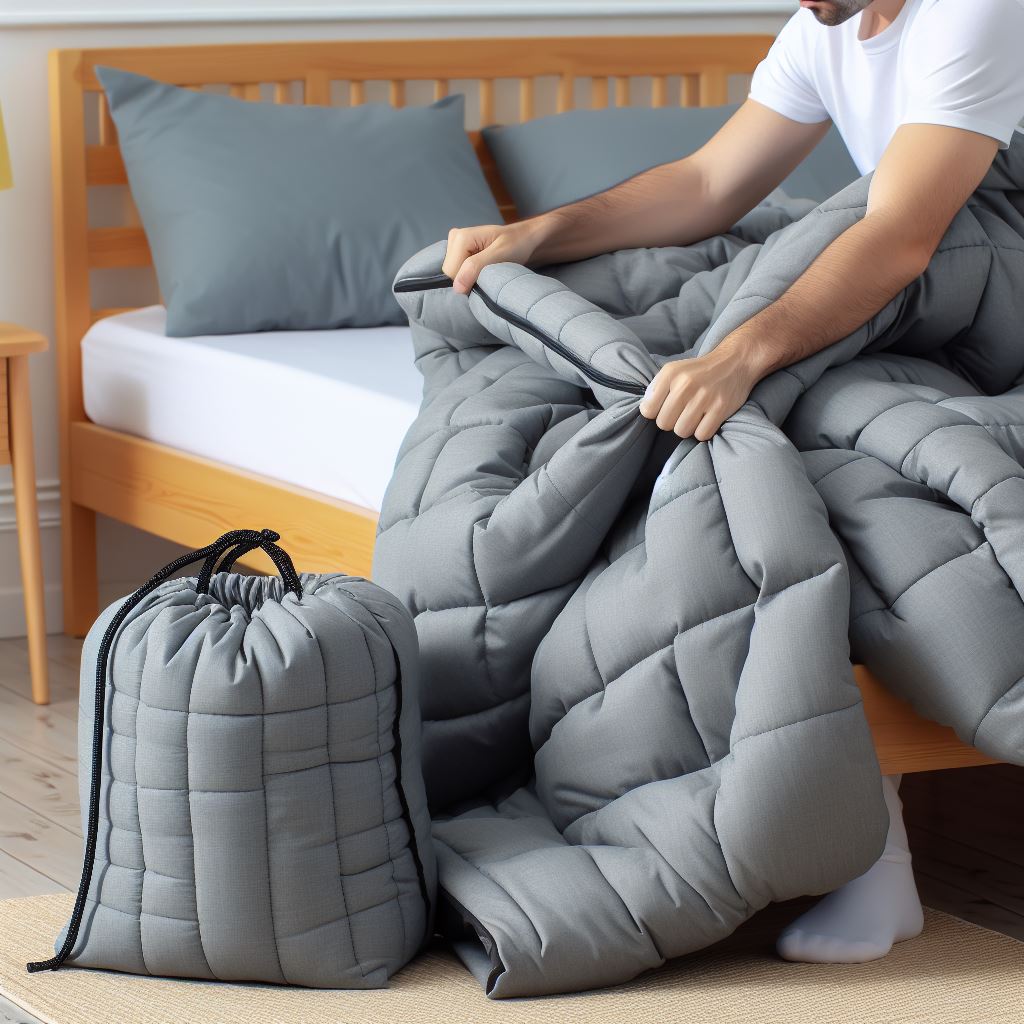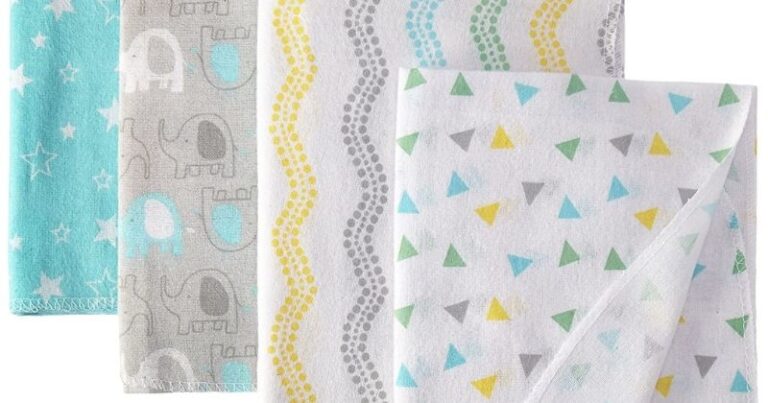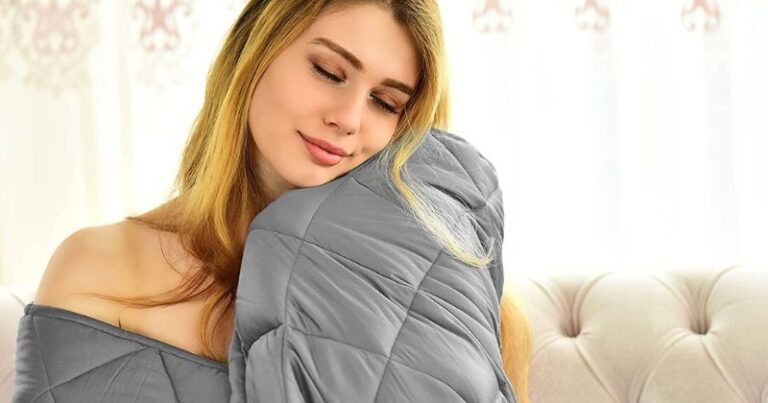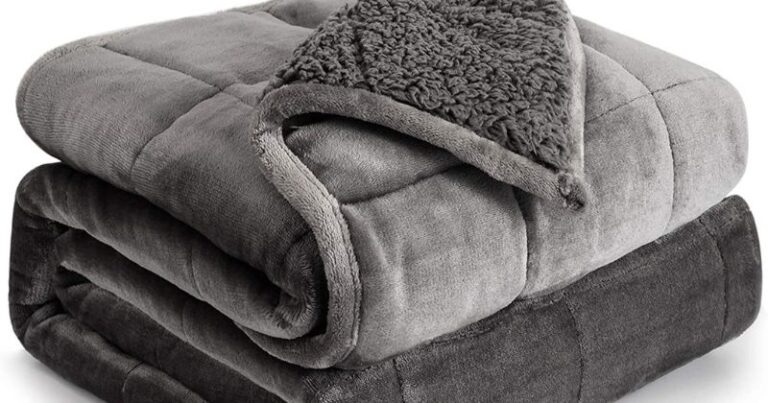Weighted blankets and ADHD: Can they help improve focus? ADHD, or Attention Deficit Hyperactivity Disorder, is a neurodevelopmental disorder that affects individuals of all ages. Managing the symptoms of ADHD, which include difficulties with focus, attention, and impulse control, can be challenging. Weighted blankets have gained attention as a potential intervention for ADHD, known for their soothing and calming effects. But can these blankets truly help individuals with ADHD improve their focus and attention?
In this article, we’ll explore the connection between weighted blankets for ADHD, examining the science behind their effectiveness, potential benefits, and how to integrate them into ADHD management. Join us as we delve into the world of weighted blankets and their potential impact on improving focus in individuals with ADHD.
- Weighted blankets have gained popularity as a potential intervention for individuals with ADHD, but can they truly help improve focus?
- ADHD is a neurodevelopmental disorder characterized by symptoms of inattention, hyperactivity, and impulsivity.
- Individuals with ADHD often face challenges in maintaining focus and concentration.
- This article aims to explore the connection between weighted blankets and ADHD, providing evidence-based insights.
Understanding ADHD and its Challenges

- ADHD is a neurobiological condition that affects both children and adults.
- Symptoms of ADHD include inattention, hyperactivity, and impulsivity.
- These symptoms can significantly impact daily life, making it difficult to focus on tasks, organize responsibilities, and regulate emotions.
- Each individual with ADHD may experience a unique combination and severity of symptoms, necessitating personalized approaches to management.
The Science Behind Weighted Blankets

- Weighted blankets provide deep pressure stimulation (DPS) through their weighted fillings.
- DPS has a calming effect on the nervous system, promoting relaxation and reducing anxiety.
- The theoretical basis for using weighted blankets in various conditions, including ADHD, lies in the potential benefits of DPS.
- Research studies have explored the effects of weighted blankets on sleep, anxiety, and sensory processing, suggesting their potential value as a non-pharmacological intervention.
The Potential Benefits of Weighted Blankets for ADHD

Weighted blankets may offer several potential benefits for individuals with ADHD:
- Regulation of sensory input: The gentle, evenly distributed pressure from a weighted blanket can potentially calm the hyperactive sensory system often observed in ADHD, reducing sensory overload and enhancing focus.
- Deep pressure stimulation and relaxation: The calming effect of DPS may help reduce restlessness, impulsivity, and fidgeting, leading to increased calmness and improved focus.
- Sleep improvement: Quality sleep is crucial for individuals with ADHD, and studies suggest that weighted blankets can promote relaxation, reduce sleep disturbances, and improve sleep patterns.
- Anxiety reduction: There is a significant overlap between ADHD and anxiety, and weighted blankets may contribute to anxiety reduction, leading to improved focus and attention.
Choosing the Right Weighted Blanket for Individuals with ADHD

Several factors should be considered when selecting a weighted blanket for someone with ADHD:
- Weight and size guidelines: It is generally recommended to choose a blanket that is approximately 10% of the individual’s body weight. This provides optimal deep pressure stimulation without being too overwhelming.
- Material selection: Hypoallergenic and breathable materials, such as cotton or bamboo, are ideal choices to ensure comfort and prevent allergies.
- Safety considerations: Proper sizing and safety features, especially for children, should be prioritized. Consulting healthcare professionals or occupational therapists can provide specific guidance.
Integrating Weighted Blankets Into ADHD Management

Weighted blankets should be considered as part of a comprehensive approach to managing ADHD symptoms, along with other evidence-based strategies.
Suggestions for incorporating weighted blankets into daily routines include:
- Bedtime routine: Using a weighted blanket during sleep can improve sleep quality, establish a calming bedtime routine, and aid relaxation.
- Relaxation and focus sessions: During designated relaxation or study periods, using a weighted blanket draped over the lap or shoulders can promote focus and calmness.
- Sensory breaks: Incorporating weighted blankets during short sensory breaks throughout the day can help regulate sensory input and provide comfort.
In Conclusion
- Weighted blankets hold promise as a potential tool to improve focus in individuals with ADHD.
- However, further research and individualized approaches are necessary to fully understand their impact on ADHD symptoms.
- Consulting with healthcare professionals or occupational therapists can provide valuable guidance on integrating weighted blankets into an ADHD management plan.
- Weighted blankets have gained significant attention as a potential intervention for individuals with ADHD. While they are primarily known for providing comfort and relaxation, there is growing evidence suggesting that they may also help improve focus and attention in people with ADHD. In this article, we will delve deeper into the topic and explore the science behind weighted blankets, their potential benefits for ADHD, how to choose the right one, and how to integrate them into ADHD management.
Please leave any comments below. Thank you for reading 🙂
Disclaimer: The information provided in this article is for educational purposes only and should not replace professional medical advice. If you have concerns about ADHD or any other health-related issues, please consult with a qualified physician.







